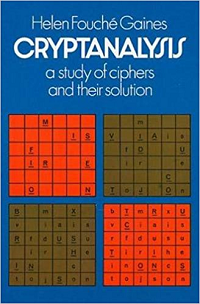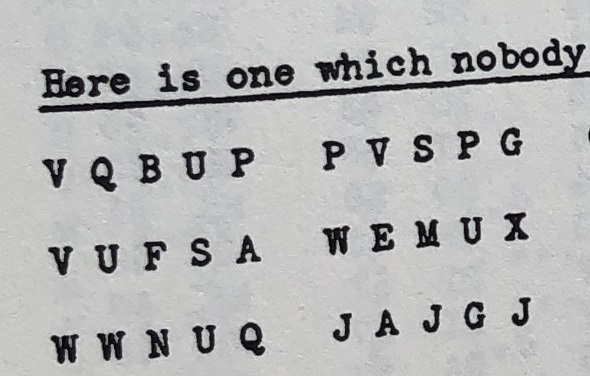Codebreaking expert and book author Helen Fouché Gaines created a crypto challenge that is unsolved to this day.
One of the most popular codebreaking books is Cryptanalysis by Helen Fouché Gaines (1888-1940).

Published in 1939 (a year before the author’s death), this work soon became a standard in the American Cryptogram Association and and a widely accepted reference book. While Cryptanalysis is today outdated in many respects, it is still an interesting read for everybody interested in codebreaking.
If you are looking for a more up-to-date book about cryptanalysis than Fouché Gaines’, try this one. At least one of the authors will be familiar to you. To my regret, this highly recommendable guide will only be published in fall next year.
An unsolved cryptogram
Richard Bean, …

Richard Bean (used with permission)
… who recently solved two tough crypto mysteries, told me that one of the challenge cryptograms contained in Cryptanalysis is unsolved. This was new to me, though I know this book quite well (last year at HistoCrypt, I published an examination of the Dorabella cryptogram based on methods described in it). This unsolved ciphertext is the last challenge introduced in Cryptanalysis. The headline is quite telling:

Here’s a transcription:
VQBUP PVSPG GFPNU EDOKD XHEWT IYCLK XRZAP VUFSA WEMUX GPNIV QJMNJ JNIZY KBPNF RRHTB WWNUQ JAJGJ FHADQ LQMFL XRGGW UGWVZ GKFBC MPXKE KQCQQ LBODO QJVEL.
Several websites mention this challenge. For instance, the blog Futility Closet writes:
It was still unsolved in 1968, when Dmitri Borgmann, editor of the “Journal of Recreational Linguistics“, urged his readers to tackle the problem […] So far as I can tell, they let it lie there, and it remains unsolved to this day. Any ideas? There are few clues in Gaines’ book. The cipher is the last in a series of exercises at the end of a chapter titled “Investigating the Unknown Cipher,” and she gives no hint as to its source. Of the exercises, she writes, “There is none in which the system may not be learned through analysis, unless perhaps the final unnumbered cryptogram.” The solution says simply “Unsolved.”
What kind of cipher?
Nick Pelling wrote about this challenge: “… it is not at all clear whether this is a composed challenge cipher (i.e. designed to confound) or an accidental challenge cipher (i.e. one found in the wild but never yet solved). I suspect the latter… but perhaps someone will know for sure either way.”
According to Nick, the ciphertext has a flattish distribution (Q appears 9 times, while T & Y appear only twice each, all 26 letters are used), with a standard deviation of 1.52144, i.e. much flatter than a normal alphabet would present. This means that Fouché Gaines’ cryptogram was probably not encrypted with a MASC. A transposition cipher doesn’t fit with the statistical properties, either.
Can a reader find out more about this unsolved cryptogram?
Follow @KlausSchmeh
Further reading: A crypto mystery from 1948
Linkedin: https://www.linkedin.com/groups/13501820
Facebook: https://www.facebook.com/groups/763282653806483/



Kommentare (4)